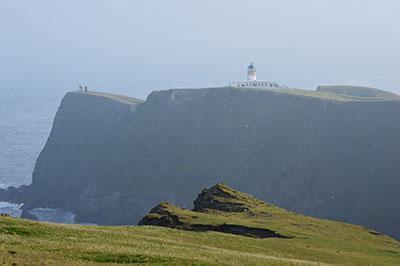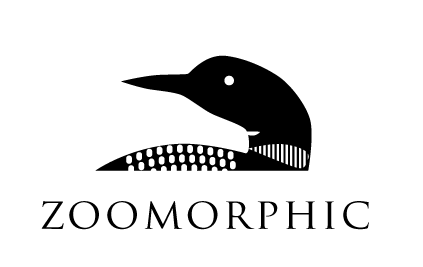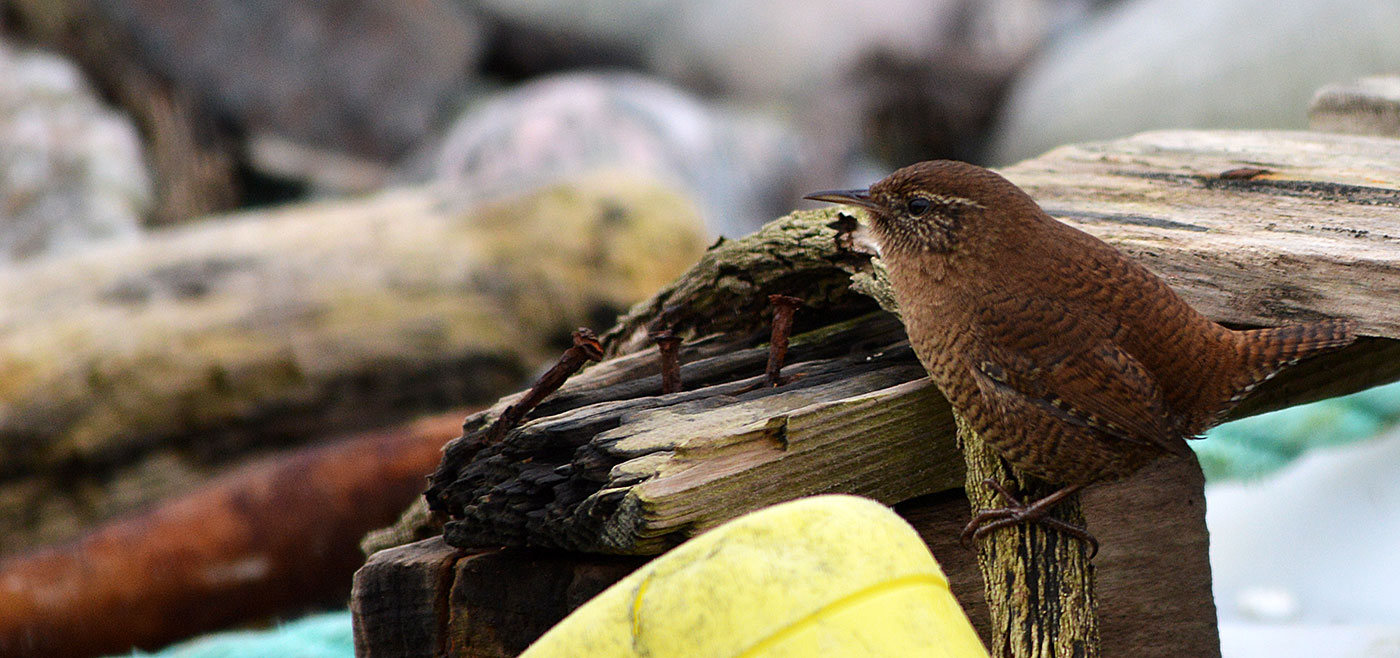by Sally Huband
The antidote to a Shetland winter is the song of a Shetland wren. This is my fourth winter on these islands and it has been by far the worst, enough to make me doubt my resilience. Storm followed storm and the lulls were few, the noise of wind was almost constant as was the wind’s silencing of birds. In January, in a relative lull, I watched a family of whoopers grazing on the flooded banks of a loch. Now and then one of the cygnets would lift its head out of the water to let out a single soft call. It lifted my spirits to hear the cygnet but it was all too brief a moment and all too quickly swept away by the next storm.
On the last Sunday in March, a windless and warm day, I picked my way along the strandline of a rocky shore searching for beached birds. Just one intact fulmar, now destined for a research laboratory in the Netherlands where the plastic within its gizzard will be sorted, counted and weighed. For the first time this year I could feel my muscles starting to relax in the warmth but spring still felt a long way off. Fulmars occupy nest sites as early as January but it’s not until May that the first sea swallow (Arctic tern or tirrick) ‘snips the string that holds the world in’ (from April Birthday by Ted Hughes). April is the longest of months in Shetland. Carrying the fulmar back to the car, I was halted by the blistering full song of a Shetland wren, the first I’d heard this year. The wren was perched on a dry stone wall, head tilted up and back, throwing its powerful song out over the voe. All remaining tension drained from me, it was a blissful moment.
Six islands in the north-east Atlantic have Eurasian wren subspecies all of their own, including Shetland and Fair Isle. And each of these island wrens has a different mean song structure and length (Shannon et al., 2014). In 1952 Edward Armstrong wrote of the St Kildan and Hebridean wrens; ‘the songs of these two populations, only about 45 miles apart, are so distinctive that they could not be confused by any attentive listener with sufficient musical discrimination’. He describes the song of the Shetland wren as more ‘twittery’ and different ‘from that of the European wren in being less shrill, mechanical and percussive.’ To me the sound of a Shetland wren is all the more remarkable because other than the ‘blithe chorus of reassurance’ of singing skylarks (Ursula Venables) there is very little birdsong in Shetland, this is a place of seabirds, shorebirds and moorland birds, not songbirds. In our garden, when the wind allows, we commonly hear the chatter of house sparrows and the curious wiry songs of starlings, the caws of the neighbourhood hoodies and the more occasional cronk of a raven flying high overhead. There is no blackbird song, though they breed elsewhere in Shetland, and no dawn chorus as such.
It seems churlish to lament a lack of bird ‘song’ in a place of remarkable bird sounds. The reedy honk of whoopers is soft on the ear and so too is the tender cackle of fulmars on the nest. The noise of some birds can jangle nerves, the loud repetitive squeaking of agitated oystercatchers and the screeching of pissed-off Arctic terns, though I long to hear both during the winter. Shetland is a place where it is often possible to feel bewitched by birds, the urgent ascending scales of displaying curlews and the wobbling moans of snipe tail feathers winnowing the air. The high pitched lowing of rain geese (red-throated divers) is eerie but the strangest call of any bird is that of a storm petrel on its nest, a stuck record played at too high a speed. The wren sounds ‘out of place amongst the cackling and laughing of gulls’ (Kenneth Williamson) because it sings a song, recognisable as such to our human brains.
The musicality of the wren’s song causes us to assign this bird with the human traits of ‘friendliness’ (Ursula Venables) and ‘cheerfulness’ (Henry Saxby). I find myself thinking of this small creature as plucky. Though the Shetland wren, like all the north-east Atlantic island subspecies, is far from small. If a Eurasian wren is a touch bigger than a goldcrest then a Shetland wren is closer in size to a dunnock. In the Aberdeenshire garden that we left behind when we moved to Shetland we would see tiny wrens foraging along the mossy drystone walls on most days and there was an extravagance of nests in a rickety outbuilding. But in the spring of 2011 they were gone. The weather that winter had been exceedingly harsh, icicles over a metre long had encased the cottage in ice for weeks at a time, 40% of Scotland’s wren population perished. Their small size hints at fragility and the complete collapse of our local population compounded this impression.
Shetland wrens may be less dainty than the mainland form but they are still dwarfed by the scale and hostility of many of the habitats in which they eke out an existence. To my skewed to mainland Britain perspective, Shetland wrens have the capacity to survive in astonishing places. One windless winter’s day I walked the narrow length of an uninhabited peninsular. It was an overcast day and the silvery sea met the dark sky at a sharp edged horizon; the sea appeared to be pouring over and off the edge of the world, Ultima Thule. The fins of porpoises broke through the sea’s surface and startled black guillemots into a running flight. A five-strong group of great northern divers bunched tightly together. Steep slopes dropped down to the sea and in places the short sward bristled with the tiny black, hooded cobra heads of earth tongue fungus.
At the end of this peninsular a boulder beach faces the full brunt of the sea. There is little shelter here and even on a calm day there are waves. Though remote it is far from pristine and many forms of plastic litter cover the beach. On this occasion a large block of polystyrene dammed a stream, the source of the synthetic hail that covered much of the ground. Foraging in amidst all the plastic, kelp stems and boulders, a scurrying Shetland wren; ‘[h]e’ll whirr trickle-low as his shadow – Brief as a mouse’s bounce from safety to safety.’ (from Wren by Ted Hughes). One of the Shetland names for the wren is sisti moose, from Norn (a form of Old Norse no longer spoken) meaning relative of the mouse. There is a similar Faroese name for the wren, músabróður (brother of the mouse) and another listed Shetland name, rindill echoes the Icelandic musarrindill. I like to think that these old names hint at a long-standing appreciation of this creature. Edward Armstrong notes that the St Stephen’s Day tradition of hunting the wren is not known in Shetland.
The winged mice of Shetland live around human settlements too, occupied and ruined, but territories are just as typically established on boulder beaches, cliffs and bogs. It is in the bogs in winter that I find their presence the most curious, and pleasing. Here snipe and red grouse scatter in flustered panic. I once disturbed a merlin which flew more calmly away, skimming the heather before dropping to the ground to magically disappear. Wrens, in contrast to all other moorland birds, stick about, companionably, reassuringly you could say. They emerge to assess my intrusion before dropping out of sight under a peaty overhang only to reappear slightly further up or downstream. Here they inhabit the subsurface of the land, the myriad burns that riddle and cut through the bogs, little bog divers.
Edward Armstrong, in 1952, was the first person to provide an account of the Shetland wren; ‘[u]nlike the St Kilda wren T. T. hirtensis, it never aroused the cupidity of collectors, and naturalists have devoted little attention to it.’ His meticulous field work revealed that Shetland wrens are usually monogamous, in contrast to those on mainland Britain. This, he was able to explain, is an adaptation to the Shetland environment. At 60 degrees north there is more daylight in the summer months, almost constant at midsummer, but the breeding season is shorter and the availability of insect prey is less. The full attention of both parents is required to raise just a single brood. Armstrong also deduced that the typical insect prey of wrens, the larvae of Lepidoptera, is less abundant here. Chicks are fed a higher proportion of adult insects which, with their chitinous exoskeletons, are less digestible. You can almost sense his excitement at discovering that juvenile Shetland wrens produce ‘castings’, ‘orally voided’ indigestible material. These were analysed to reveal the wing scales of moths, the bristles of Lepidoptera larvae, the front wings of a chalcid wasp, the spiracles of Coleopterous larvae and the jaws of chilopods, the list continues in beautiful detail.
I first delved into Edward Armstrong’s writing on wrens in the library of the Fair Isle Bird Observatory. By then my fascination with Shetland wrens had grown. When I learnt that a separate subspecies of wren inhabits Fair Isle, and only Fair Isle (a tiny island 5 km long by 3 km wide, only just visible from the southern tip of Shetland’s mainland on a clear day) that was the goal of my trip there, to see one of the rarest wrens of all. I asked a friendly regular visitor, an expert birder, where to seek one out. His eyes lit up at the mention of the Fair Isle wren and he pointed through the window to the impressive dry stone wall by the beach. I spent a long while waiting there but no wren. No wrens down in the south of the island either. I saw many remarkable sights, a juvenile pallid harrier hunting meadow pipits on the common grazings and warblers trying to skulk in the sparse cover of the brittle and blackened husks of hog weed but it wasn’t until I sought out gannets that I found a wren.

From Fair Isle’s high northern cliffs there is a very fine view of the gannetry which occupies the roof and steeple of the aptly named Kirk Stack. A low bank of dense mist encircled the island a few miles offshore, intensifying the feeling of remoteness, of being on a small island in a big sea. On Shetland’s mainland I live next to the inter-island airstrip and, even though it was a calm day up on that Fair Isle cliff, I have never been gladder to hear the thrum of an Islander’s engines. A painted lady settled to bask nearby, another improbable migrant and a sight to behold in these, excepting the introduced large white, butterfly-less islands. A second movement caught my attention, a single silent wren working its way along a turf bank. I crept closer and it dropped over the cliff’s edge where it continued to forage on the smallest of ledges. Armstrong comments on the difficulty of estimating a Shetland wren’s territory size ‘because they may extend vertically’ and I wondered if this wren had a nest somewhere down on the cliff face.
It seems remarkable, at a time when humans have shifted from naming to deleting species, that the Fair Isle wren was only recognised as a subspecies in 1950. In this year Kenneth Williamson travelled to the Royal Scottish Museum to examine 20 wren specimens collected from Fair Isle. Williamson was, at this time, the director of the newly established Fair Isle Bird Observatory and was responsible for establishing the scientific work and for the construction of the Heligoland traps. It was the wrens captured in these newly built traps that prompted his visit to the museum collection. Williamson concluded that these ‘more rufescent’ birds are distinct both from the Shetland subspecies (Troglodytes troglodytes zetlandicus) and the mainland form and successfully proposed that wrens on Fair Isle should be recognised as a new subspecies, T. t. fridariensis, after the name Fridarey given to the island in the Orkneyinga Saga. He writes of their feistiness; ‘wrens struggled and squirmed with surprising strength and vigour for such small mites, and no bird was more wily and difficult to secure’. Indeed the measure of a well-built trap was that it could contain a Fair Isle wren. Since this time, the population of this subspecies has fluctuated between ten and 50 singing males, individual wrens may be feisty but the population as a whole, on this small and isolated island, is fragile.
Every once in a while our Shetland garden is visited by a migrant wren, probably birds breeding in Norway, and in a reversal of astonishment I marvel at how small they are. My brain has normalised the Shetland wren, the migrant and more common form is now the more curious. Shetland wrens no longer seem so incongruous in the company of snipe, fulmars or gannets. I’m less inclined now to think of these birds as fragile or dainty, maybe this was always a misplaced impression, but I’m still momentarily taken aback when I have walked for miles through a lonely winter bog or along remote cliffs to hear one singing or to see one skulking along ahead of me. Each time I see one in such a setting it feels a little akin to climbing a mountain only to find a blue tit foraging among the stones of the summit cairn and for that, they are all the more wonderful to see. Most of all I am very glad of their presence for the gift of their song. It made me smile to read the sentence that Mike Toms uses to finish his account of the wren; ‘[t]o me, a description from the very start of the 1900’s sums up the Wren; ‘even on uninhabited island rocks … [the Wren’s] … lively song relieves the awful solitudes.’ That it does.
References and thanks:
The Birds of Shetland by Henry Saxby published in 1874 by MacLachlan and Stewart
The Wrens of Fair Isle by Kenneth Williamson published in volume 93 of Ibis in 1951 (pages 599-601)
The Behaviour and Breeding Biology of the Shetland Wren by Edward A. Armstrong published in volume 94 of Ibis in 1952 (pages 220-242)
“Casting” by Shetland wren nestlings by E. A. Armstrong and W. H. Thorpe published in 1952 in volume 45 of British Birds, pages 98-101
Tempestuous Eden by Ursula Venables published in 1952 by Museum Press
Fair Isle and its birds by Kenneth Williamson published in 1965 by Oliver and Boyd
April Birthday by Ted Hughes from Season Songs published in 1976 by Faber and Faber
Wren by Ted Hughes from Collected Poems published in 2003 by Faber and Faber
The British Trust for Ornithology article on wrens by Mike Toms can be accessed here: http://www.bto.org/sites/default/files/shared_documents/gbw/associated_files/bird-table-53-2008-wren-article.pdf
A genetic screen of the island races of Wren Troglodytes troglodytes in the North-east Atlantic by Thomas J. Shannon, Robert Y. McGowan, Bernie Zonfrillo, Stuart Piertney and J. Martin Collinson published in 2014 in Bird Study, volume 61 (2), pages 135-142
Many thanks to the BOU for access to the Ibis papers
Sally Huband has a background in nature conservation and a PhD in the butterflies of Carpathian hay meadows. She swapped mountains for islands to live in Shetland, writes a nature diary for BBC Wildlife Magazine http://raingeeseandselkies.blogspot.co.uk/ and blogs about the land, habitats and wildlife due to be impacted by a 103 turbine wind farm http://boglochandhill.blogspot.co.uk/.

